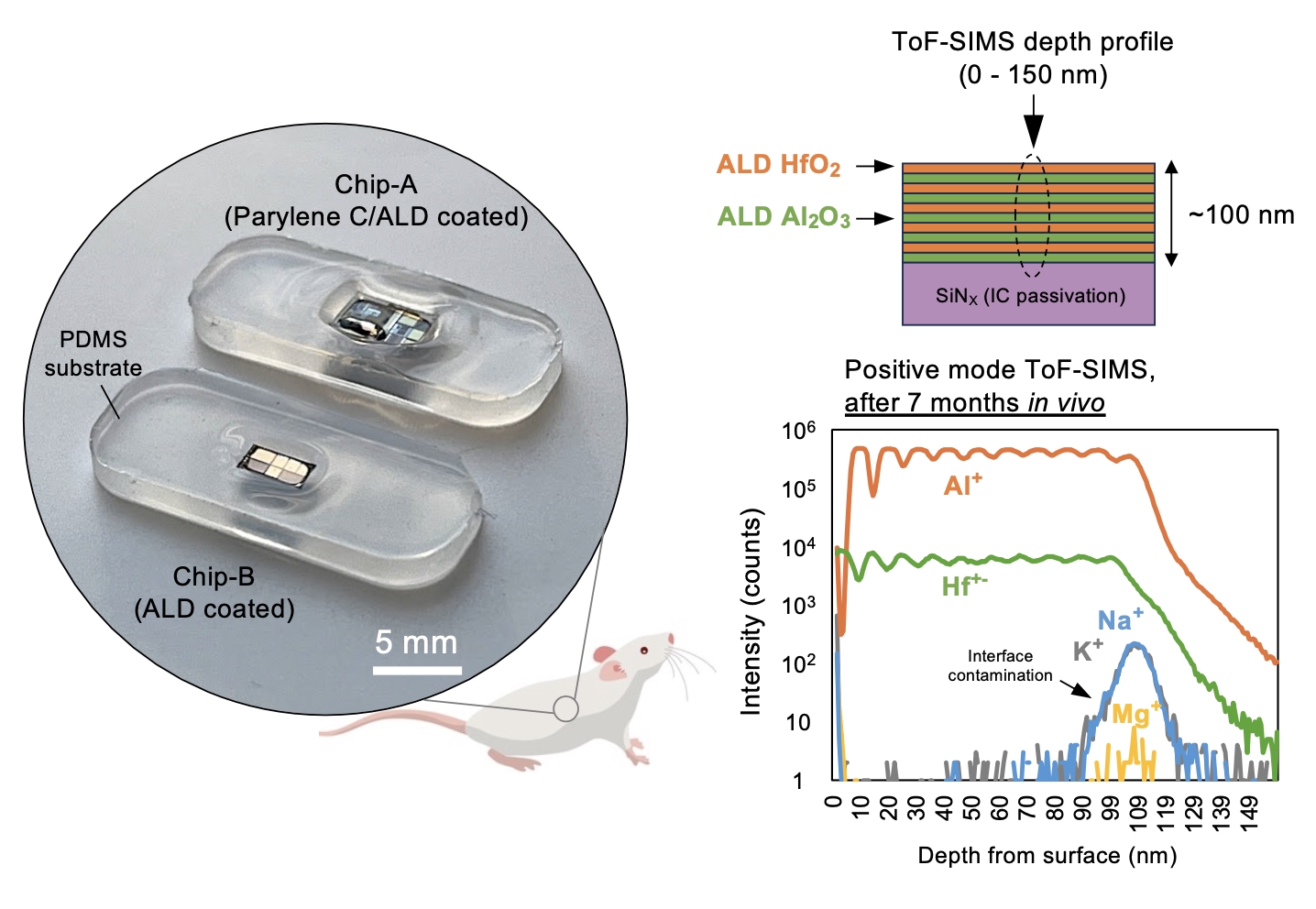Long-term stable neural implants: Fraunhofer IZM and TU Delft publish groundbreaking research findings
The Technologies for Bioelectronics research group at Fraunhofer IZM, led by Prof. Vasiliki (Vasso) Giagka, has made significant progress in collaboration with TU Delft and other partners toward the development of long-term stable neural implants. The joint research focused on improving the durability of silicon-based integrated circuits (ICs) in the corrosive environment of the human body.
Published in Nature Communications [1], the study demonstrates that bare silicon chips can maintain stable electrical performance under physiological conditions. Partial encapsulation with PDMS (polydimethylsiloxane) – a soft, biocompatible silicone – proved to be an effective barrier against body fluids. In accelerated in vitro studies involving heat, saline solution, and electrical biasing, the chips remained fully functional over extended periods. Material analyses revealed degradation in the uncoated areas, while PDMS-coated regions remained largely intact.
In a complementary study published in Small [2], the team also evaluated atomic layer deposition (ALD) and hybrid multilayer coatings for miniaturized implants. The results showed that ultrathin ALD coatings offer excellent biostability, making them a promising solution for future bioelectronic applications.
Relevance for medical technology
Neural implants are a key technology for the treatment of neurological disorders such as Parkinson’s disease and clinical depression. These systems enable stimulation, blocking, or recording of neural signals — especially in chronic applications. Long-term functionality of the electronic components is essential for their successful clinical deployment.
The findings of this research provide essential technological foundations for the development of miniaturized, long-lasting bioelectronic systems. They pave the way for new applications in neurotechnological research, brain-computer interfaces, and long-term medical therapies.
Links to papers:
[1] https://www.nature.com/articles/s41467-024-55298-4
[2] https://onlinelibrary.wiley.com/doi/10.1002/smll.202410141
Last modified:
 Fraunhofer Institute for Reliability and Microintegration IZM
Fraunhofer Institute for Reliability and Microintegration IZM